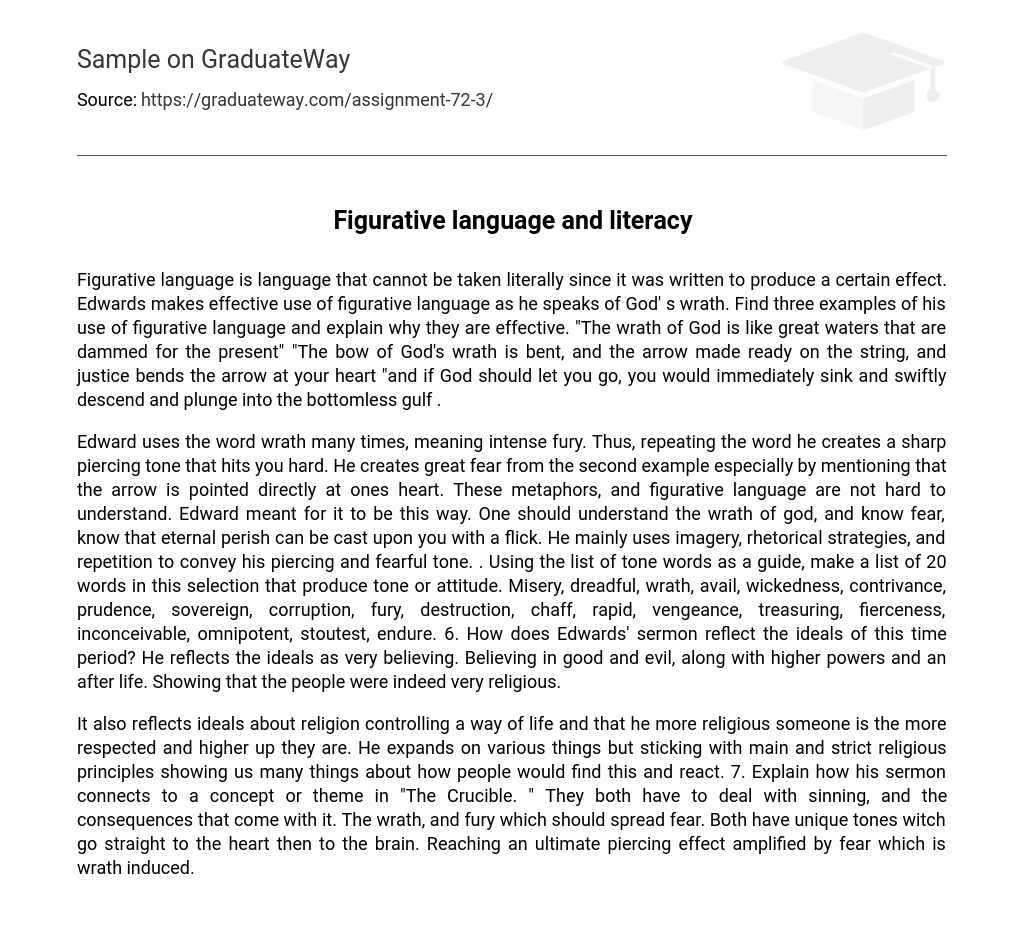The author employs figurative language to create a specific impact, as seen in Edwards’ portrayal of God’s wrath. Three instances of his effective use of figurative language can be found in the following excerpts: “The wrath of God is like great waters that are dammed for the present,” “The bow of God’s wrath is bent, and the arrow made ready on the string, and justice bends the arrow at your heart,” and “If God should let you go, you would immediately sink and swiftly descend and plunge into the bottomless gulf.”
Edward uses the term “wrath” repeatedly, which conveys a powerful and intense anger. By employing this word multiple times, he creates a sharp and piercing tone that deeply impacts the listener. In particular, he instills great fear through his second example, where he mentions an arrow aimed directly at one’s heart. These metaphors and figurative language are easily comprehensible as Edward intended to make it so. He wants his audience to understand the wrath of God and to be aware of the potential for everlasting damnation with a mere flick. He mainly employs imagery, rhetorical strategies, and repetition to convey a piercing and fearful tone. Using a list of tone words as a reference, here are 20 words in this passage that contribute to the overall tone or attitude: misery, dreadful, wrath, avail, wickedness, contrivance, prudence, sovereign, corruption, fury, destruction, chaff, rapid, vengeance, treasuring, fierceness, inconceivable, omnipotent, stoutest, endure.
How does Edwards’ sermon reflect the ideals of this time period? It reflects the prevalent belief system during this era. The sermon demonstrates a strong belief in good and evil, higher powers, and an afterlife. This indicates that the people of that time were highly religious.
The text demonstrates the belief that religion should govern one’s lifestyle, with greater respect and status associated with high levels of religious devotion. It explores the significance of adhering to core religious principles, offering insights into people’s reactions. 7. Discuss the relevance of the sermon to a theme in “The Crucible.” Both works address the concept of sinning and the resulting consequences, evoking fear through expressions of wrath and fury. Both employ powerful tones that resonate emotionally before engaging the intellect, creating a deeply penetrating effect enhanced by fear inspired by wrath.





